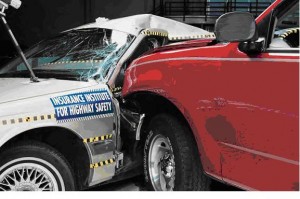Do you know the difference between comprehensive and collision coverage? What’s gap insurance for? And do you know who will pay if a friend borrows your car and then crashes it?
If you’re like most American motorists, the odds are that you can’t answer those or other relatively basic questions about your coverage, what might be called Auto Insurance 101. A multiple-choice survey of 500 drivers conducted by Insurance.com found that the average score was a miserable 32%, and even when accounting for gender, age and region, no group scored higher than 39%.
“Drivers may see their policies as gobbledygook,” said Insurance.com Editor Michelle Megna. “Their eyes are moving over the words but there’s no understanding.”
Ironically, those who admitted having a “terrible” level of knowledge about auto insurance scored higher than those who rated themselves “excellent,” 28% to 26%. Those self-ranked as “good,” generally scored best, at 34%.
Even then, the overall poor showing suggests that motorists are likely to make some significant mistakes when it comes time to sign up for insurance coverage, especially if they follow the increasingly common path of working through an online service that might not offer the guidance of a well-trained agent.
The quiz asked ten questions about auto insurance basics. The lowest scores reflected a lack of knowledge about:
- Comprehensive coverage, only 2% choosing the right multiple-choice answer;
- Only 7% knew the typical discounts available for motorists; and
- Just 8% understood the factors insurance companies use to set rates.
On the positive side:
- A full 71% know whose insurance will kick in if a friend borrows your car and then crashes it;
- And 69% know what Personal Injury of Medical Payment Protection covers;
- Just over half, 55%, know what gap insurance covers when a car is totaled.
Part of the problem, said Megna, is the choice of terms that insurance companies use. Take so-called “comprehensive” coverage. It picks up such things as theft, fire, vandalism, or striking an animal while driving. But it doesn’t cover hitting another car. That’s part of your collision coverage.
“Unfortunately its name is quite misleading – it’s not ‘comprehensive’ at all — which clearly leads to confusion among auto insurance buyers,” said Megna.
Drivers over 40 scored best on the survey, averaging 39%, compared to just 24% among those aged 18 to 29. Women outscored men, 35% to 27%, And according to region, those in the South topped the list at 34% compared to just 29% among those living in the Northeast.
Perhaps the most frightening part of the study? Those who have read their policy from cover to cover scored the lowest, at just 28%. Though who skimmed through did slightly better – but those who got the highest score, averaging 35% — never bothered to read the policy.


Most U.S. consumers IME are technically illiterate on all fronts. That being said, the insurance industry has done all that it can to confuse the issues on auto, home and Biz policies.